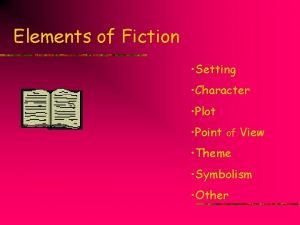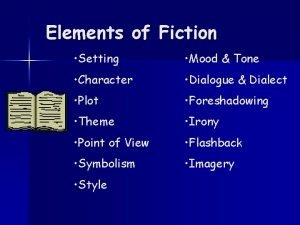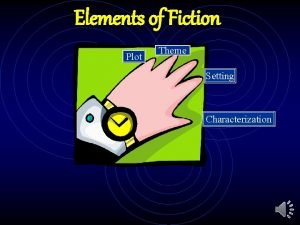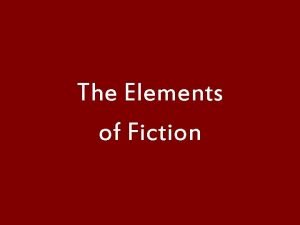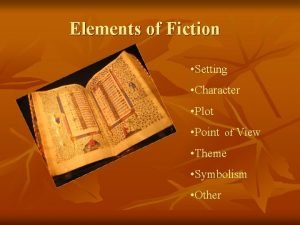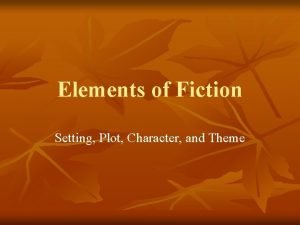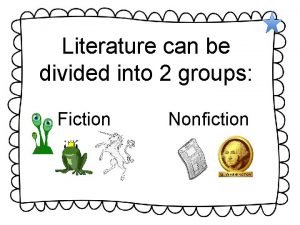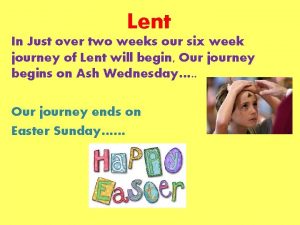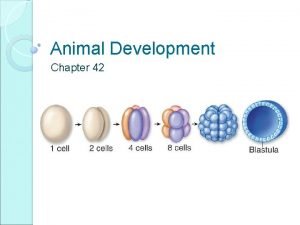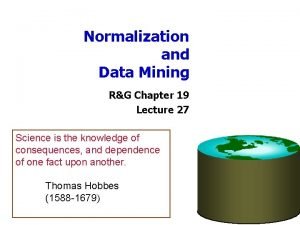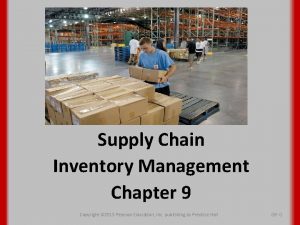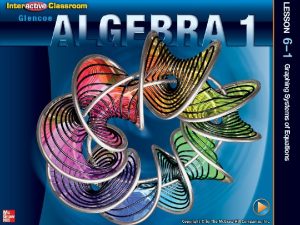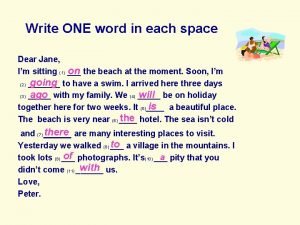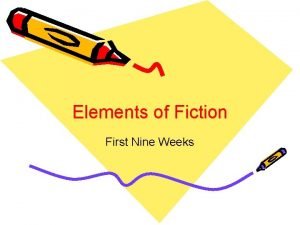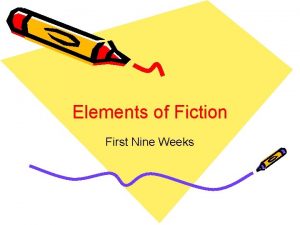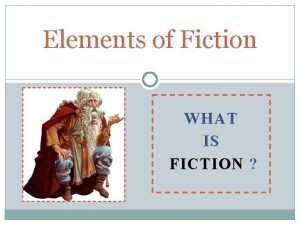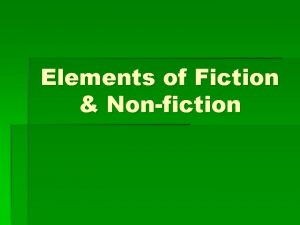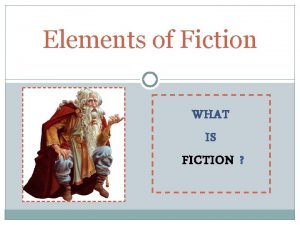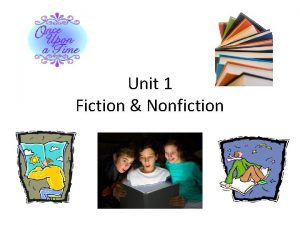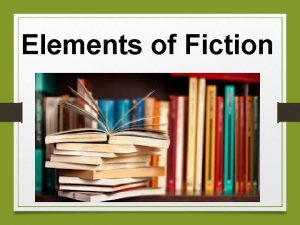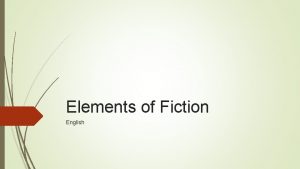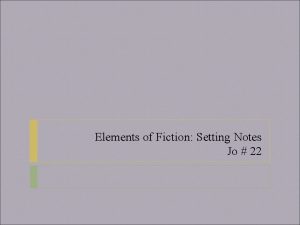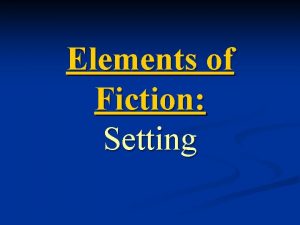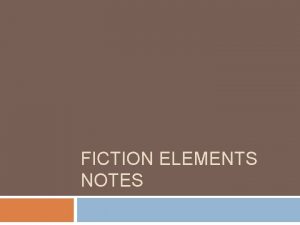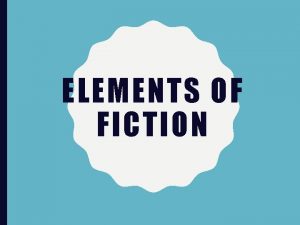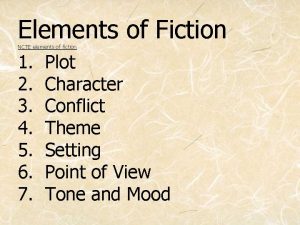Elements of Fiction Weeks 1 2 Fiction Setting



















- Slides: 19

Elements of Fiction: Weeks 1 & 2 • Fiction • Setting • Characters • Plot • conflict • Theme • Types of stories

What is Fiction? n Writing that tells about imaginary characters and events in the form of short stories or novels.

Characters are: The people (or animals, things, etc. presented as people) appearing in a literary work.

Types of Characters: • Protagonist-A main character who encounters conflict and is seen as a good guy or hero. • Antagonist- A character and/or force that causes conflict for the Protagonist. • Villain-The bad human or animal • Hero/Heroine- The good human or animal • Static Character: does not change in the course of the story. • Dynamic Character: undergoes some type of change in story.

The protagonist is the “good guy”

The antagonist is the “bad guy” or force

What is Characterization? The act of creating and developing a character. There are two ways to do this… DIRECTLY & INDIRECTLY

Direct vs. Indirect Characterization 1. Direct: “he was an old man. . ” (The Old Man and the Sea) 2. Indirect: “I wish my thighs weren’t so fat. ” 3. Own Words and Actions 4. Reaction of other Characters 5. Physical appearance 6. Own thoughts 7.

What is Plot? The series or sequence of events and actions that takes place in a story.

Plot Line: contains 5 essential parts Climax: The turning point. The highest point if interest or most intense moment (either mentally or in action). Rising Action: the series of conflicts and crisis in the story that lead to the climax. Exposition: The start of the story. The way things are before the action starts. Falling Action: all of the action which follows the Climax. Resolution: The conclusion, the tying together of all of the threads and the solving of the conflict.

Setting: The Catcher in the Rye: New York, 1940 s the time, place and period in which the action takes place. Lord of the Flies: deserted island, the future. The Bean Trees: Arizona/Oklahoma 1980 s.

What is Conflict? The problem in a story that the protagonist faces either externally (with the outside world) or internally (inside of him or herself).

Internal conflict is a problem a character has with himself/herself. External conflict is a problem a character has with the outside world. • Conflict • Man VS Man • Man VS Nature • Man VS Society • Man VS Himself

Great stories always have a great conflict Man vs. Nature Man vs. Society Man vs. Machine Man vs. Himself

Setting: can help in the portrayal of character. “…it was so quiet and lonesome out, even though it was Saturday night. I didn’t see hardly anybody on the street. Now and then you just saw a man and a girl crossing the street with their arms around each other’s waists and all, or a bunch of hoodlumy-looking guys and their dates, all of them laughing like hyenas at something you could bet wasn’t funny. New York’s terrible when somebody laughs on the street very late at night. You can hear it for miles. It makes you feel so lonesome and depressed. ” The Catcher in the Rye (81)

Setting: in some works of fiction action is so closely related to setting that the plot is directed by it. “The new man stands, looking a minute, to get the set-up of the day room. One side of the room younger patients, known as Acutes because the doctors figure them still sick enough to be fixed, practice arm wrestling and card tricks…Across the room from the Acutes are the culls of the Combine’s product, the Chronics. Not in the hospital, these to get fixed, but just to keep them from walking around the street giving the product a bad name. One Flew Over the Cuckoo’s Nest (19)

Setting: can establish the atmosphere of a work. “During the whole of a dull, dark, and soundless day in the autumn of the year, when the clouds hung oppressively low in the heavens, I had been passing alone, on horseback, through a singularly dreary tract of country. ” “The Fall of the House of Usher” by Edgar Allan Poe

Folktale: A story composed orally and then passed down from person to person by word of mouth. “During the whole of a dull, dark, and soundless day in the autumn of the year, when the clouds hung oppressively low in the heavens, I had been passing alone, on horseback, through a singularly dreary tract of country. ” “The Fall of the House of Usher” by Edgar Allan Poe

Types of Folktales: Folktales/fairytales-Make believe stories that contain ordinary people, magic, and begin with “once upon a time” and end with “happily ever-after. ” Fables-short stories that contain animals and a moral or lesson to be learned Myths-Stories centered around the creation of things and the gods. The Greeks & the Romans were know for their myths. Legends-Stories centered on real people that have been exaggerated.
 Characteristics of nonfiction
Characteristics of nonfiction Elements of fiction setting
Elements of fiction setting Elements of fiction
Elements of fiction Plot and setting
Plot and setting Elements of fiction setting
Elements of fiction setting Setting elements of fiction
Setting elements of fiction Setting plot theme
Setting plot theme Elements of fiction setting
Elements of fiction setting Is a genre of speculative fiction
Is a genre of speculative fiction Contemporary realistic fiction vs historical fiction
Contemporary realistic fiction vs historical fiction Fictional character examples
Fictional character examples Bma bank holiday lieu days
Bma bank holiday lieu days Pharyngeal arches
Pharyngeal arches 6 weeks of lent
6 weeks of lent Where is the embryo located
Where is the embryo located 3 weeks from today
3 weeks from today Gestational age in weeks
Gestational age in weeks Safety stock formula supply chain
Safety stock formula supply chain How many weeks
How many weeks Put one word in each space
Put one word in each space

